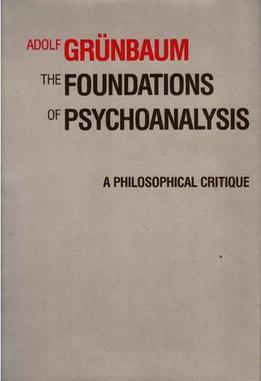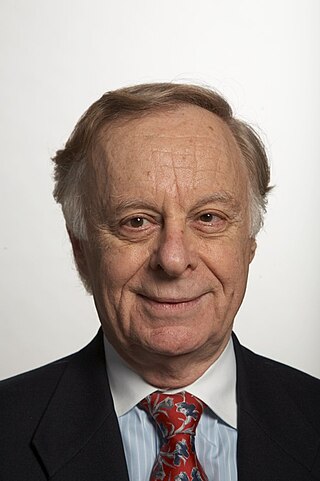Psychoanalysis is a set of theories and therapeutic techniques that deal in part with the unconscious mind, and which together form a method of treatment for mental disorders. The discipline was established in the early 1890s by Sigmund Freud, whose work stemmed partly from the clinical work of Josef Breuer and others. Freud developed and refined the theory and practice of psychoanalysis until his death in 1939. In an encyclopedic article, he identified the cornerstones of psychoanalysis as "the assumption that there are unconscious mental processes, the recognition of the theory of repression and resistance, the appreciation of the importance of sexuality and of the Oedipus complex." Freud's colleagues Alfred Adler and Carl Gustav Jung developed offshoots of psychoanalysis which they called individual psychology (Adler) and analytical psychology (Jung), although Freud himself wrote a number of criticisms of them and emphatically denied that they were forms of psychoanalysis. Psychoanalysis was later developed in different directions by neo-Freudian thinkers, such as Erich Fromm, Karen Horney, and Harry Stack Sullivan.

Sándor Ferenczi was a Hungarian psychoanalyst, a key theorist of the psychoanalytic school and a close associate of Sigmund Freud.
Relational psychoanalysis is a school of psychoanalysis in the United States that emphasizes the role of real and imagined relationships with others in mental disorder and psychotherapy. 'Relational psychoanalysis is a relatively new and evolving school of psychoanalytic thought considered by its founders to represent a "paradigm shift" in psychoanalysis'.
Identification is a psychological process whereby the individual assimilates an aspect, property, or attribute of the other and is transformed wholly or partially by the model that other provides. It is by means of a series of identifications that the personality is constituted and specified. The roots of the concept can be found in Freud's writings. The three most prominent concepts of identification as described by Freud are: primary identification, narcissistic (secondary) identification and partial (secondary) identification.
Psychoanalytic dream interpretation is a subdivision of dream interpretation as well as a subdivision of psychoanalysis pioneered by Sigmund Freud in the early 20th century. Psychoanalytic dream interpretation is the process of explaining the meaning of the way the unconscious thoughts and emotions are processed in the mind during sleep.
Daniel N. Stern was a prominent American developmental psychiatrist and psychoanalyst, specializing in infant development, on which he had written a number of books — most notably The Interpersonal World of the Infant (1985).
The term "intersubjectivity" was introduced to psychoanalysis by George Atwood and Robert Stolorow (1984), who consider it a "meta-theory" of psychoanalysis. Intersubjective psychoanalysis suggests that all interactions must be considered contextually; interactions between the patient/analyst or child/parent cannot be seen as separate from each other, but rather must be considered always as mutually influencing each other. This philosophical concept dates back to "German Idealism" and phenomenology.
Edward George Glover was a British psychoanalyst. He first studied medicine and surgery, and it was his elder brother, James Glover (1882–1926) who attracted him towards psychoanalysis. Both brothers were analysed in Berlin by Karl Abraham; indeed, the "list of Karl Abraham's analysands reads like a roster of psychoanalytic eminence: the leading English analysts Edward and James Glover" at the top. He then settled down in London where he became an influential member of the British Psycho-Analytical Society in 1921. He was also close to Ernest Jones.
A training analysis is a psychoanalysis undergone by a candidate as a part of her/his training to be a psychoanalyst; the (senior) psychoanalyst who performs such an analysis is called a training analyst.

August, is a novel written by Judith Rossner focused on a psychoanalyst and one of her analysands. The title refers to the month of August, when analysts leave the city for the month and thus leave some of their patients without the emotional support of the analytic relationship.
Sandor Rado was a Hungarian psychoanalyst of the second generation, who moved to the United States in the 1930s.

The Foundations of Psychoanalysis: A Philosophical Critique is a 1984 book by the philosopher Adolf Grünbaum, in which the author offers a philosophical critique of the work of Sigmund Freud, the founder of psychoanalysis. The book was first published in the United States by the University of California Press. Grünbaum evaluates the status of psychoanalysis as a natural science, criticizes the method of free association and Freud's theory of dreams, and discusses the psychoanalytic theory of paranoia. He argues that Freud, in his efforts to defend psychoanalysis as a method of clinical investigation, employed an argument that Grünbaum refers to as the "Tally Argument"; according to Grünbaum, it rests on the premises that only psychoanalysis can provide patients with correct insight into the unconscious pathogens of their psychoneuroses and that such insight is necessary for successful treatment of neurotic patients. Grünbaum argues that the argument suffers from major problems. Grünbaum also criticizes the views of psychoanalysis put forward by other philosophers, including the hermeneutic interpretations propounded by Jürgen Habermas and Paul Ricœur, as well as Karl Popper's position that psychoanalytic propositions cannot be disconfirmed and that psychoanalysis is therefore a pseudoscience.

Freud and Philosophy: An Essay on Interpretation is a 1965 book about Sigmund Freud, the founder of psychoanalysis, written by the French philosopher Paul Ricœur. In Freud and Philosophy, Ricœur interprets Freudian work in terms of hermeneutics, a theory that governs the interpretation of a particular text, and phenomenology, a school of philosophy founded by Edmund Husserl. Ricœur addresses questions such as the nature of interpretation in psychoanalysis, the understanding of human nature and the relationship between Freud's interpretation of culture amongst other interpretations. The book was first published in France by Éditions du Seuil, and in the United States by Yale University Press.

Henry Zvi Lothane is a Polish-born American psychiatrist, psychoanalyst, educator and author. Lothane is currently Clinical Professor at Icahn School of Medicine at Mount Sinai, New York City, specializing in the area of psychotherapy. He is the author of some eighty scholarly articles and reviews on various topics in psychiatry, psychoanalysis and the history of psychotherapy, as well as the author of a book on the famous Schreber case, entitled In Defense of Schreber: Soul Murder and Psychiatry. In Defense of Schreber examines the life and work of Daniel Paul Schreber against the background of 19th and early 20th century psychiatry and psychoanalysis.

The Art of Listening is a 1994 book on psychology by the psychoanalyst Erich Fromm. In the work, Fromm elucidates his therapeutic method of dealing with the psychological sufferings of people in contemporary society. Fromm's work contains a great deal of clinical reflections of the psychoanalyst. In The Art of Listening, Fromm studies the communication between analyst and analysand in which the analyst offers himself as a human being specially trained in the "art of listening." The art of therapy is the art of listening.
The negative therapeutic reaction in psychoanalysis is the paradoxical phenomenon whereby a plausible interpretation produces, rather than improvement, a worsening of the analysand's condition.

Annie Reich was a Viennese-born psychoanalyst who became a leading analytic theorist in post-war New York.
The New Center for Psychoanalysis is a psychoanalytic research, training, and educational organization that is affiliated with the American Psychoanalytic Association and the International Psychoanalytic Association. It was formed in 2005 from the merger of two older psychoanalytic organizations, the Los Angeles Psychoanalytic Society and Institute (LAPSI) and the Southern California Psychoanalytic Institute and Society (SCPIS), which had been founded as a single organization in the 1940s and then split around 1950.
Patrick Casement is a British psychoanalyst and author of multiple books and journal articles on contemporary psychoanalytic technique. He has been described as a pioneer in the relational approaches to psychoanalysis and psychotherapy by Andrew Samuels, Professor of Analytical Psychology. His book 'Learning from Our Mistakes' received a Gradiva award for its contribution to psychoanalysis, and his book 'Learning Along the Way: Further Reflections on Psychoanalysis and Psychotherapy' was listed in the top 100 psychotherapy books of all time by BookAuthority.
Antonino Ferro is an Italian psychoanalyst, who specializes in the work with children. He is strongly influenced by the British psychoanalyst W.R. Bion, and together with Giuseppe Civitarese has been instrumental in the development of post-Bionian Field Theory (BFT).





